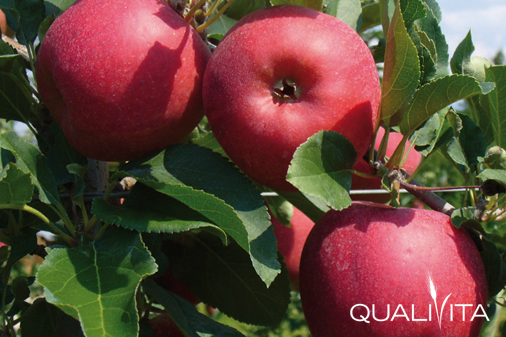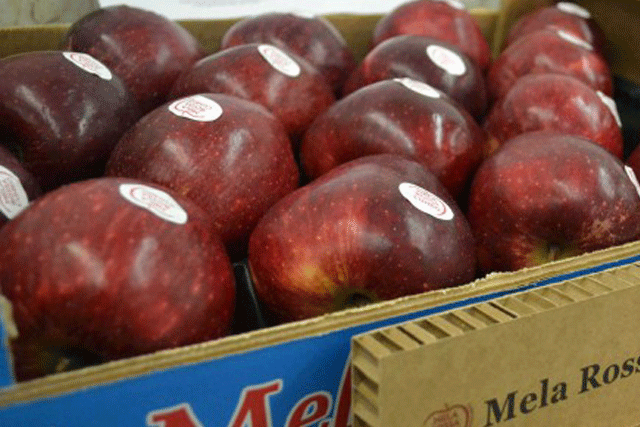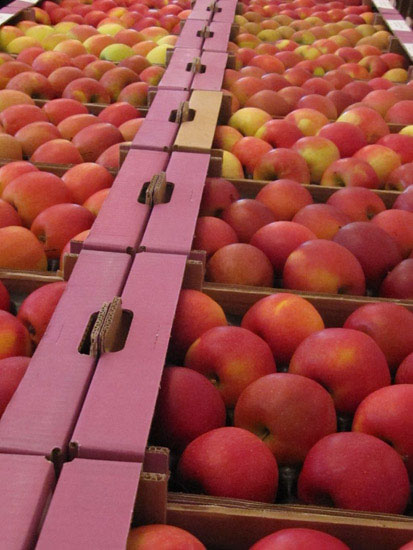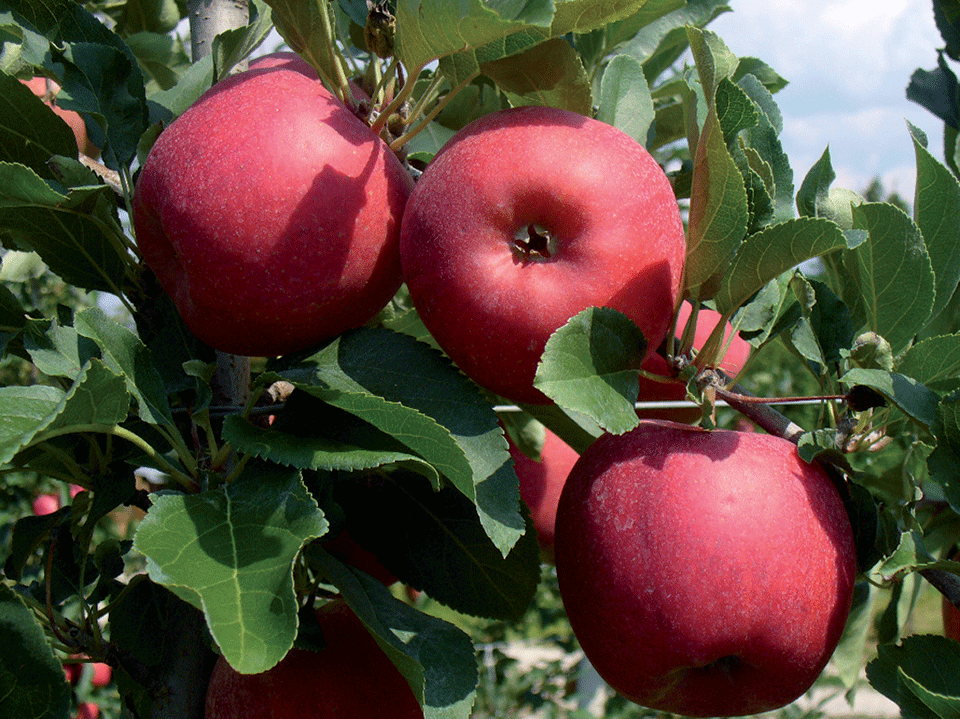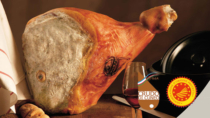Description
Mela Rossa Cuneo PGI is a fresh apple with compact, juicy pulp, deriving from the Red Delicious, Gala, Fuji and Braeburn varieties.
Production Area
The production area of Mela Rossa Cuneo PGI is within most municipalities in the Province of Cuneo, and several municipalities in the Province of Turin, in the Piedmont region.
Production Method
The apple orchards are cultivated with the traditional methods used in the production area of the PGI. The orchards are arranged in such a way that the crowns of the trees are exposed to the sun, ensuring that the fruit obtain their typical bright colour. The maximum density is 4,000 plants per hectare. Pruning, which is carried out once in winter and at least once in summer, is done to guarantee the correct development of the plants and in particular the brightness of the fruit’s epicarp. Harvesting takes place as each individual cultivar reaches the right level of ripeness, that is, when the fruit is a deep red colour. The total production permitted for Mela Rossa Cuneo PGI is 60 tonnes per hectare. After the harvest, the apples can be conserved by refrigeration.
Appearance and Flavour
The Red Delicious variety of Mela Rossa Cuneo PGI has a truncated cone shape, with dark wine-red skin and white pulp that can sometimes have pale green veins; it has a soft consistency. Fruit of the Gala and Braeburn varieties have a spheroidal to truncated cone shape; the first is characterised by its bright, deep red skin and creamy white pulp that is firm, crunchy and juicy; the skin of the second ranges from red-orange to dark orange in colour, and the pulp is creamy white with a consistent, delicate texture. The Fuji variety is spheroidal to cylindrical in shape, with pale to deep red skin and white or creamy white pulp that is firm, crunchy and juicy.
History
The University of Gastronomic Sciences in Pollenza (Cuneo) drew up a detailed document on the vocation of producing red-skinned apples in the area of interest. In fact, agricultural academies and associations have been established in Piedmont since the 18th century, with the aim of carrying out a variety of important research into the spread of new cultivars and scientifically-based cultivation techniques. The red skinned apple varieties began to increase until eventually they became the prevalent group. In the 1960s, 70s and 80s, the term “Mela Rossa Cuneo” was institutionalised and appeared on the travel documents of products destined for both internal and external markets.
Gastronomy
Mela Rossa Cuneo PGI should be kept in a cool, dry place, away from direct light and heat sources. If kept in the refrigerator, it is best left at room for a while before eating in order to fully enjoy its unmistakable flavour. Mela Rossa Cuneo PGI is used as an ingredient in numerous recipes of the local cuisine, both sweet and savoury. For example: Mela Rossa Cuneo PGI and saffron pasta, rice and Mela Rossa Cuneo PGI soufflé, Cunesi meatballs, where the mincemeat is mixed with finely chopped apple, and Mela Rosse Cuneo PGI mousse.
Marketing
The product is marketed as Mela Rossa Cuneo PGI, in the following varieties: Red Delicious (from the beginning of September to the end of June), Gala (from the beginning of August to the end of May), Fuji (from the beginning of October to the end of July) and Braeburn (from the end of September to the end of July). It is sold in suitable packaging.
Distinctive Features
The characteristic bright, dark red overcolour on the skin is the distinctive quality that has given Mela Rossa Cuneo PGI its solid reputation on national and foreign markets, and are characteristics given to the specific climatic conditions of the geographical area.





